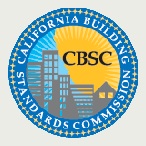
With the California Building Standards Commission’s unanimous approval on Tuesday, the state took the green-code lead in the U.S. by adopting building standards that will require green practices in both commercial and residential construction.
The mandatory, statewide standards – collectively known as CalGreen – are scheduled to take effect beginning January 2011. CalGreen features wide-ranging sustainability measures, including requirements for the installation of low-flow indoor plumbing (with the aim of reducing water use by 20%), separate metering for indoor and outdoor water use on commercial projects, recycling of at least 50% of construction waste, and use of low-VOC paints and flooring.
As noted in stories posted by the Los Angeles Times and the San Francisco Chronicle, the new code, which is expected to raise construction costs only slightly, was supported by most building industry associations, realty associations, and the California Chamber of Commerce. Meanwhile, some environmental groups, including Global Green, the Sierra Club, and the Natural Resources Defense Council, have argued that the code doesn’t go far enough, while objections from other quarters – including some contractors, architects, engineers, and two nonprofit certification specialists, the U.S. Green Building Council and Berkeley-based Build It Green – focus on a provision in the code that allows municipalities to adopt and enforce a more stringent code.
Two tiers too confusing?
A principal issue with the latter, Elizabeth Echols, director of USGBC’s Northern California chapter, told the Los Angeles Times, is that the two-tier labeling system accompanying the stricter measures will be open to conflicting interpretations and will be difficult for local building inspectors to enforce.
“The tiers cause confusion in the marketplace and the potential for builders to label their buildings green without substantiating their claims,” while leaving inspections up to local officials who may not have the technical expertise to verify builders’ claims, Echols said.
One cabinet official with Governor Arnold Schwarzenegger’s office countered that GBC resisted the two-tier provision because the group didn’t want its LEED rating system to face more competition in the certification realm, although Matthew Hargrove, a vice president with the California Business Properties Association, pointed out to the Chronicle that many jurisdictions near the coast, including San Francisco, likely will stay with LEED, while inland municipalities likely will lean more toward certification by local officials.
Of course it’ll be a while before the effectiveness of various inspection regimens can be determined with some accuracy. Mary Nichols, chairwoman of the California Air Resources Board, noted in the Chronicle post that the Building Standards Commission had tightened its proposal based on the board’s requests. She also acknowledged that even if local certification is not as rigorous as third-party systems, at the very least the state’s green code “is a heck of a lot better than anything we have now.”
The full text of California’s new green building code is posted online here.
Weekly Newsletter
Get building science and energy efficiency advice, plus special offers, in your inbox.















0 Comments
Log in or create an account to post a comment.
Sign up Log in